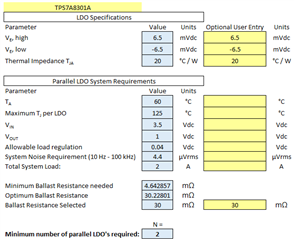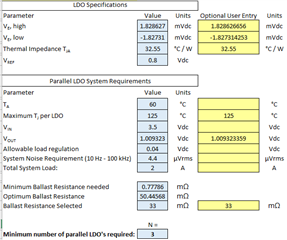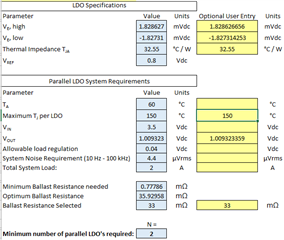Other Parts Discussed in Thread: , TPS7A83A, TIDA-01232
Hi all, I need some advice.
I have to use the TPS7A85 component to meet the following parameters:
Input Voltage: 3.5V
Output Voltage: 1V
Output Current: 2A
Allowable Ripple : 1mV
Voltage Tolerance: 3%
Operating Temperature: up to 60 Deg.C
EN and Power Good Pin used
I can't use a DC-DC to step down the voltage before the LDOs.
To maximize the reliability of the circuit that will have to operate continuously for a long time (years), I was thinking of using two TPS7A85.
A serial design would be very easy to implement, but could be more prone to failures.
A parallel design instead would be intrinsically safer (it would work even with a broken component), but it is more complicated to implement.
What solution do you recommend?
Thanks in advance.
Regards.






